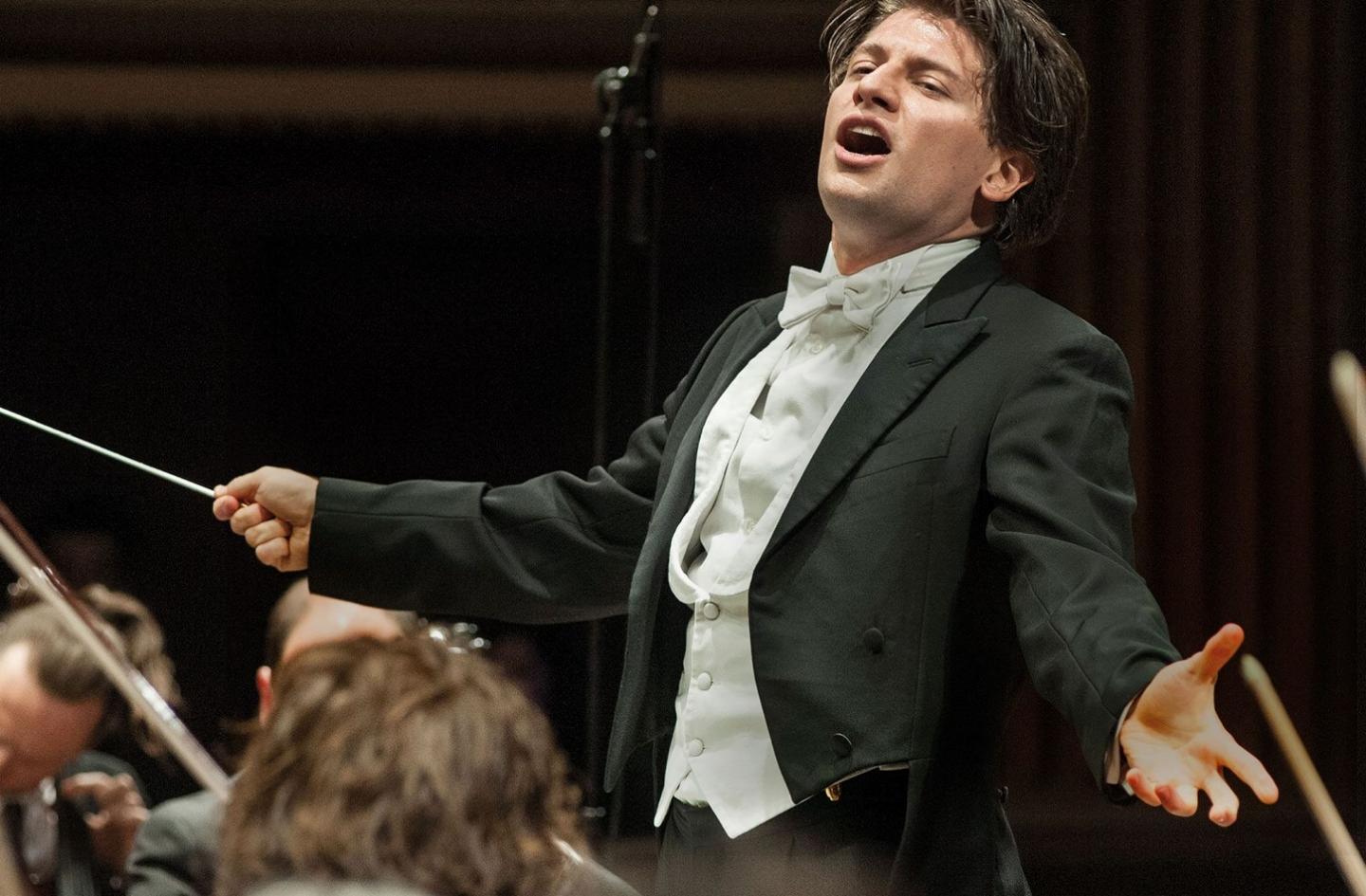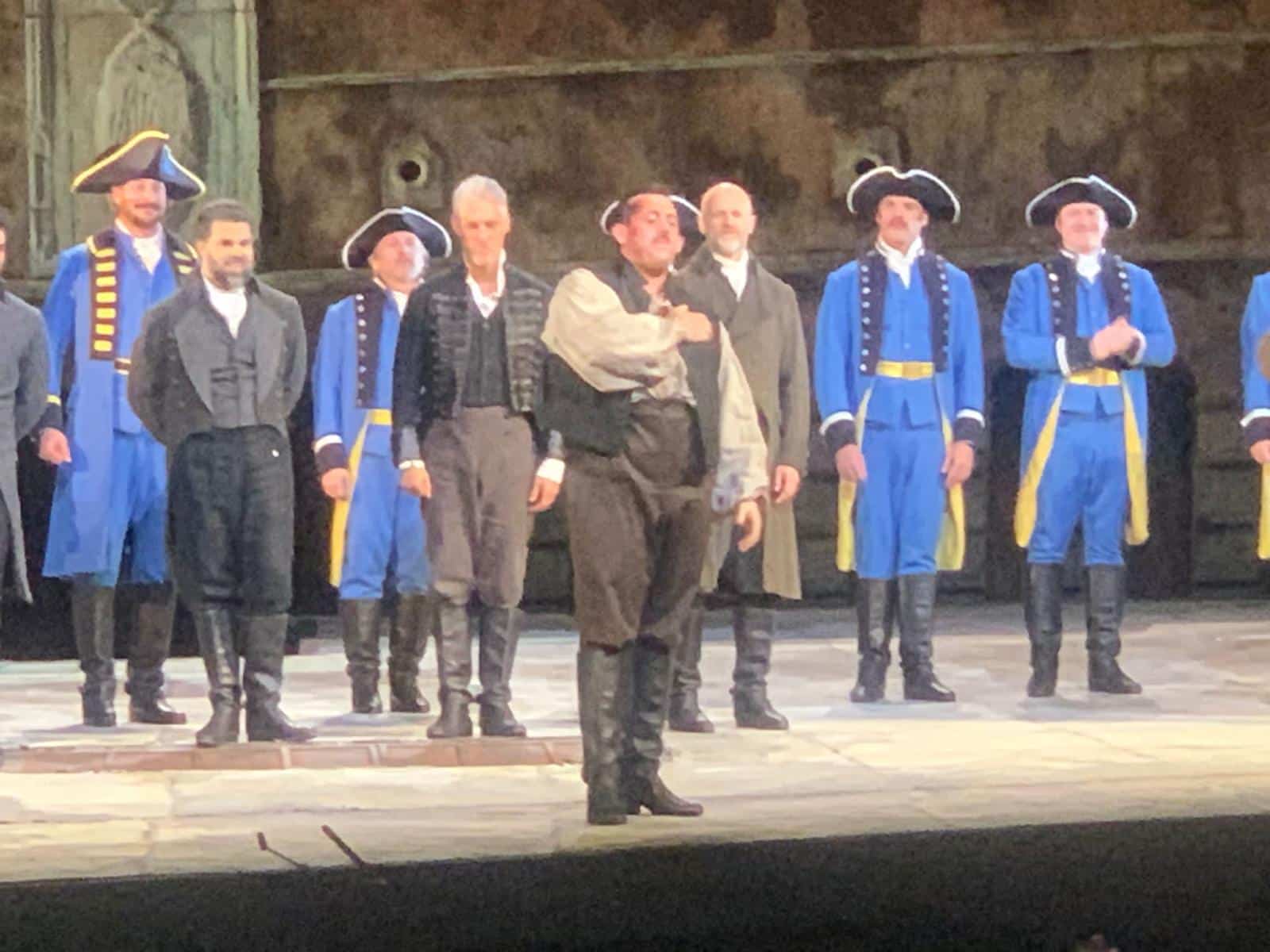…. und Morgen die ganze Welt….
main
norman lebrecht
April 14, 2011
The Berlin Philharmonic 3-D performance of Mahler’s first symphony and Rachmaninov Symphonic Dances goes on release in 60 cinemas around the UK in May.
It is an opportunity to witness one of the world’s great orchestras at the peak of its form in a technology that is evidently
too challenging for Bayreuth.
My reservation, expressed last week on the BBC’s
PM programme, is: at what cost? The Berlin Philharmonic is the most heavily subsidised orchestra on earth, by the state, the city and some very blue-chip sponsors.
They can afford to have themselves filmed in 3-D and put around the world at at time when other orchestras are suffering severe cuts and several – Syracuse in upstate New York is the latest – are going to the wall.
One orchestral manager described this initiative to me as ‘cultural imperialism’.
Your views?
Here’s some video:

And here’s the press release:BERLINER PHILHARMONIKER – A MUSICAL JOURNEY IN 3DTO BE SHOWN IN CINEMAS ACROSS THE UK FROM MAY 9THwww.amusicaljourney3d.comSIR SIMON RATTLE CONDUCTS MAHLER & RACHMANINOVIt is almost 100 years since the Berliner Philharmoniker became the first orchestra to record. Since 1913, it has been at the cutting edge of technological developments like broadcasting concerts, recording complete symphonies and operas on Schellack, Longplay and later Compact Discs – always using the latest techniques. What better orchestra than the Berliner Philharmoniker to be the first to bring concerts to cinemas in 3D?HELGE GRUENEWALD, ARTISTIC ADVISOR, BERLIN PHILHARMONICWith their latest digital venture Berliner Philharmoniker – A Musical Journey In 3D, the Berlin Philharmonic is reviving the great tradition of filming classical concerts. A cinema first A Musical Journey enables audiences not only to experience the concert from the front row of the stalls but – thanks to 3D – from a seat in the middle of the Orchestra.Arguably the finest orchestra in the world, the Berlin Philharmonic under the baton of principal conductor Sir Simon Rattle will be heard performing Mahler’s Symphony No. 1 and Rachmaninov’s Symphonic Dances. Mahler’s First Symphony is filmed in Singapore’s spectacular Esplanade Concert Hall, whereas for Symphonic Dances the producers, together with director Michael Beyer and cameraman and co-director Tomas Erhart, have developed a series of miniature stories based on the composer’s original titles for the movements “midday, sunset, midnight” that translate the music into magnificent 3D scenes.Director Michael Beyer commented “The change between the two settings ‘orchestra’ and ‘Singapore’ respond to the tunes, tempi and dance impulses of Rachmaninov’s score. Chinatown, breathtaking Western architecture and the Hindu temple in 3D together with all aspects of life, work, leisure and spirituality make the spectator believe that he is not only an observer, but in the middle of music and life.”As many as eight 3D and HD cameras were used in making this film, together with cranes, dollies and tracks. The cameramen came from Germany, the technology and technicians from Tokyo and New York. This large-scale project also received considerable local support in terms of personnel and equipment, with as many as 50 people working on the sets at any one time.Berlin Philharmoniker : 2Funded by the Media Board of Berlin-Brandenburg and STB, Berliner Philharmoniker – A Musical Journey In 3D is distributed by Arts Alliance Media and will be shown in 64 cinemas from Poole to Dundee between Monday May 9th and Sunday May 29th.





I took the opportunity of seeing the Wim Wenders film honoring Pina Bausch. I personally found the 3-D technique to be a detriment. I don´t want to see ballet as if dancing with the others. What could 3-D possibly add to a concert performance of music ?
Nearly three years ago, whilst filming for a German broadcaster, I was privileged to see a ballet performance that had been shot in 3D by Sky TV. This was on a large TV screen. It was utterly stunning and visually engaging to a level that I had not expected. It brought to life an art form that I had only seen as a poor 2D, flat, representation in the past. I believe that 3D will vastly increase awareness and enjoyment of the classical music arts – Opera, Ballet and Symphonic performance for audiences who had previously been unable to appreciate its wonders in the flesh. To all the detractors of 3D I would say this: Almost all of us are fortunate enough to see the world around us in 3D – This is what you get from viewing the world with two eyes! If you see a 3D presentation in a cinema or on TV where you find it difficult or unpleasant to watch, it is quite likely that you are watching something that has not been shot, edited or projected very well. (I’ve been behind a camera for over 30 years and have had training on 3D shooting techniques)
Pre-recorded instrumental classical videos have historically never done well as “sell through” video…. Not even by Berlin with Karajan when many many were released in possibly the worst financial deal in classical music history. And many of these in high definition video… the breakthrough technology of the time. On the other hand LIVE concerts by the L.A. Phil and others have done well due I’m sure to the fact that there is excitement to the reality of the performance unfolding before you in “real” time. Opera has done well of course in either LIVE or pre-recorded presentations due to the obvious visual aspect. It will be interesting to see how this does in Theaters with the 3D gimmick added. And I would think with Sir Simon conducting the UK will be a best case scenario. But my bet is that it won’t do well. But I’ve certainly been wrong before.
I’ve lived in Germany for 31 years. There is a nationalism in their cultural life that at times seems a bit inordinate – though it is impossible to measure this objectively, and people might be overly sensative due to Germany’s recent history. This nationalism is especially strong in the Berlin Philharmonic. When Germany was divided the orchestra stood as a symbol of Western freedom and as a symbol of eventual German re-unification. After the wall came down, the German government massively funded culture in Berlin with the intention of making it a European cultural capital on par with London and Paris. The obvious intention is to assert German identity in the world.
A great deal of nationalism surrounds all great orchestras, and they are a keystone of cultrual diplomacy. This helps explain the advertisement’s phrase “arguably the finest orchestra in the world” – bragging that might seem a bit gauche applied to other forms of cultural expression. I notice that the British (who are all too often anti-German and who might otherwise complain) have a good deal of patience for the Berlin Phil’s “cultural imperialism.” They are so proud the orchestra has that rare species of an internationally acclaimed British conductor — yet another manifestation of cutlure and nationalism.
Perhaps the most troubling aspect is the Berlin Phil’s sexism. It only admitted women in 1983, and even today women represent only 13% of its personnel – the fourth lowest ratio in the world — behind two orchestra in Vienna and the Czech Phil. (By comparison the New York Phil, the Zurich State Opera, and the National Orchestra of France all have over 40% women.) Is the sexism of the Berlin Phil an image we want sent around the world? Is it the best advertising for Berlin or Germany?
In any case, the world is a lot better off when humans are fighting their wars with culture instead of Panzers, T-34s, and Shermans. And as somewhat distasteful as the bragging and nationalism might be, the city of Berlin deserves due credit for its efforts to promote the arts.
If an orchestra is musically good enough to market its concerts to a worldwide audience more power to them. IMHO, the Berlin Philharmonic makes the cut, but I don’t particularly care for Simon Rattle’s interpretive insights, or lack thereof.
But the above 3D project disturbs me for it emphasis on the visual. For those of us who care for the music, that can be distracting. And I don’t buy the argument about audience development: those who will warm up to the music do need the visual distraction.